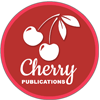- Your cart is empty
- Continue Shopping
Direct vs Indirect Cash Flow Method

The statement of cash flows is one of three financial statements required under both Australian generally accepted accounting principles and the International Financial Reporting Standards. In general, the two sets of standards are consistent between the statement of cash flows. Both allow you to present cash flow from operations using either the direct or indirect method.
- If you want to use this method, you need to keep separate records for your cash transactions and for your credit or value transactions.
- Following these steps allows you to show how your business performs on a cash flow basis.
- The three main financial statements are the balance sheet, income statement, and cash flow statement.
- Therefore, it is important to clearly and accurately present this information to internal and external members.
- You can calculate how much your cash flow fluctuates using accounts receivable and accounts payable.
The indirect cash flow method begins with your organization’s net income and adjusts it to find the cash flow from non-cash transactions. These adjustments consider things like depreciation, changes in inventory, receivables, and payables. The direct method is generally preferred because it provides more detailed information and is easier to understand for non-accounting professionals. However, preparing the cash flow statement using the direct method can be more time-consuming and costly than the indirect method because it requires more detailed data and analysis. The primary difference between direct and indirect cash flow lies in the way the operating activities section of the cash flow statement is presented.
Introduction to cash flow statements
Calculating all the above mentioned operating activities might seem tedious. There are many cloud-based and desktop automation softwares such as SaasAnt Transactions which will ease the accounting and financial management activities ensuring flawless business operation. After you complete this step, you will list the net change in cash based on these changes in operating, financing, and investing cash flow. You can use this information to calculate the net change in cash and cash equivalents.

– Sir Richard Branson, business magnate, investor, author, and philanthropist. Expenses like stock-based compensation, where employees or directors are compensated with shares or options instead of cash, are added back to net income. Similarly, provisions for doubtful debts or losses on impairments are other examples that reduce net income but don’t involve a cash outflow, so they are added back. The Finmark Blog is here to educate founders on key financial metrics, startup best practices, and everything else to give you the confidence to drive your business forward.
Direct Cash Flow Method
Your competitors can use your cash flow information against you and potentially weaken your standing in the industry. You can use both the direct and indirect method to arrive at the same conclusion. The indirect method is more commonly used by businesses, as the statistics used in the indirect method are also used in other financial statements, direct vs indirect cash flow which makes the method easier to calculate. The indirect method starts out with accrual accounting, as it begins with the company’s net income. Accrual accounting states that revenue and expenses should be recognized when earned or incurred. The indirect method of cash flow is favored by most businesses, offering ease in company comparisons.
